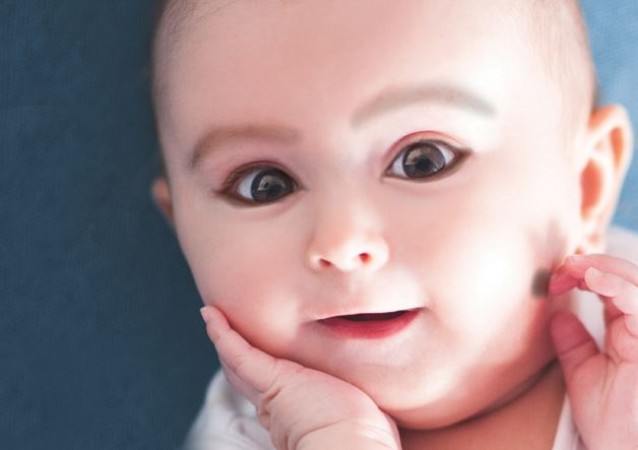
In Indian culture, the application of kajal (kohl) to children's eyes holds significant cultural and traditional value. This practice, often performed shortly after birth, carries with it beliefs of protection from evil eyes (nazar) and enhancing the child's beauty. However, the tradition of applying kajal to children's eyes raises important questions regarding its potential risks and benefits, especially concerning the health and well-being of the child.
1. Cultural Significance of Applying Kajal
The tradition of applying kajal to children's eyes is deeply ingrained in Indian culture and has been passed down through generations. It is often considered a symbol of protection and blessings for the child, with parents and grandparents performing the ritual with great care and reverence. Understanding the cultural significance of this practice is essential to appreciate its prevalence and the sentiments attached to it within Indian society.
2. Beliefs Surrounding Kajal and Eye Size
One of the prevalent beliefs associated with applying kajal to children's eyes is its supposed ability to make the eyes appear larger and more attractive. This belief is rooted in cultural aesthetics and perceptions of beauty. However, it is essential to distinguish between cultural beliefs and scientific facts regarding the impact of kajal on eye size. Exploring the origins and evolution of this belief can provide insights into its persistence and significance in contemporary Indian society.
3. Scientific Perspectives on Eye Size and Kajal Application
From a scientific standpoint, the size and shape of a person's eyes are primarily determined by genetic factors rather than external applications like kajal. Experts in ophthalmology and pediatric medicine emphasize the lack of evidence supporting the notion that kajal can alter the physical dimensions of a child's eyes. Delving into the biological mechanisms underlying eye development and growth can shed light on the limitations of cultural beliefs regarding kajal's effects on eye size.
4. Potential Risks Associated with Kajal Application
Despite its cultural significance, the practice of applying kajal to children's eyes carries inherent risks that warrant careful consideration. These risks include:
Risk of Infection: Kajal, particularly when applied in unhygienic conditions or with contaminated applicators, can introduce harmful bacteria into the eyes, leading to infections such as conjunctivitis.
Blockage of Tear Ducts: The thick and greasy texture of kajal can obstruct the tear ducts, impeding the natural drainage of tears and increasing the risk of eye irritation and dryness.
Exposure to Harmful Chemicals: Many commercially available kajal products contain toxic substances such as lead, which can pose serious health risks, especially to young children with developing immune systems.
5. Expert Insights and Recommendations
Medical professionals, including pediatricians and ophthalmologists, provide valuable insights into the risks associated with applying kajal to children's eyes and offer recommendations for safe eye care practices. By emphasizing the importance of hygiene, regular eye examinations, and avoiding the use of potentially harmful cosmetic products, experts empower parents to make informed decisions regarding their children's eye health.
6. Cultural Preservation vs. Health Considerations
The debate surrounding the tradition of applying kajal to children's eyes raises broader questions about the intersection of cultural practices and health considerations. While respecting cultural traditions is important for preserving cultural identity and heritage, it is equally crucial to prioritize the health and well-being of children. Balancing cultural preservation with evidence-based healthcare practices requires nuanced discussions and informed decision-making by families and communities.
In conclusion, the tradition of applying kajal to children's eyes reflects the rich cultural tapestry of Indian society and carries deep-rooted significance for many families. However, it is essential to critically examine the beliefs and practices associated with kajal application in light of scientific evidence and medical insights. By understanding the cultural context, acknowledging potential risks, and prioritizing children's health, families can navigate the delicate balance between cultural tradition and evidence-based healthcare practices. Ultimately, fostering open dialogue and informed decision-making can lead to the promotion of holistic well-being for children within the framework of cultural preservation and adaptation.
How to Optimize Your Sleep for Peak Performance and Vitality
Power of Breath: How One Simple Technique Can Change Your Life
The Hidden Dangers Lurking in Your Kitchen: How to Detox Your Home for Health